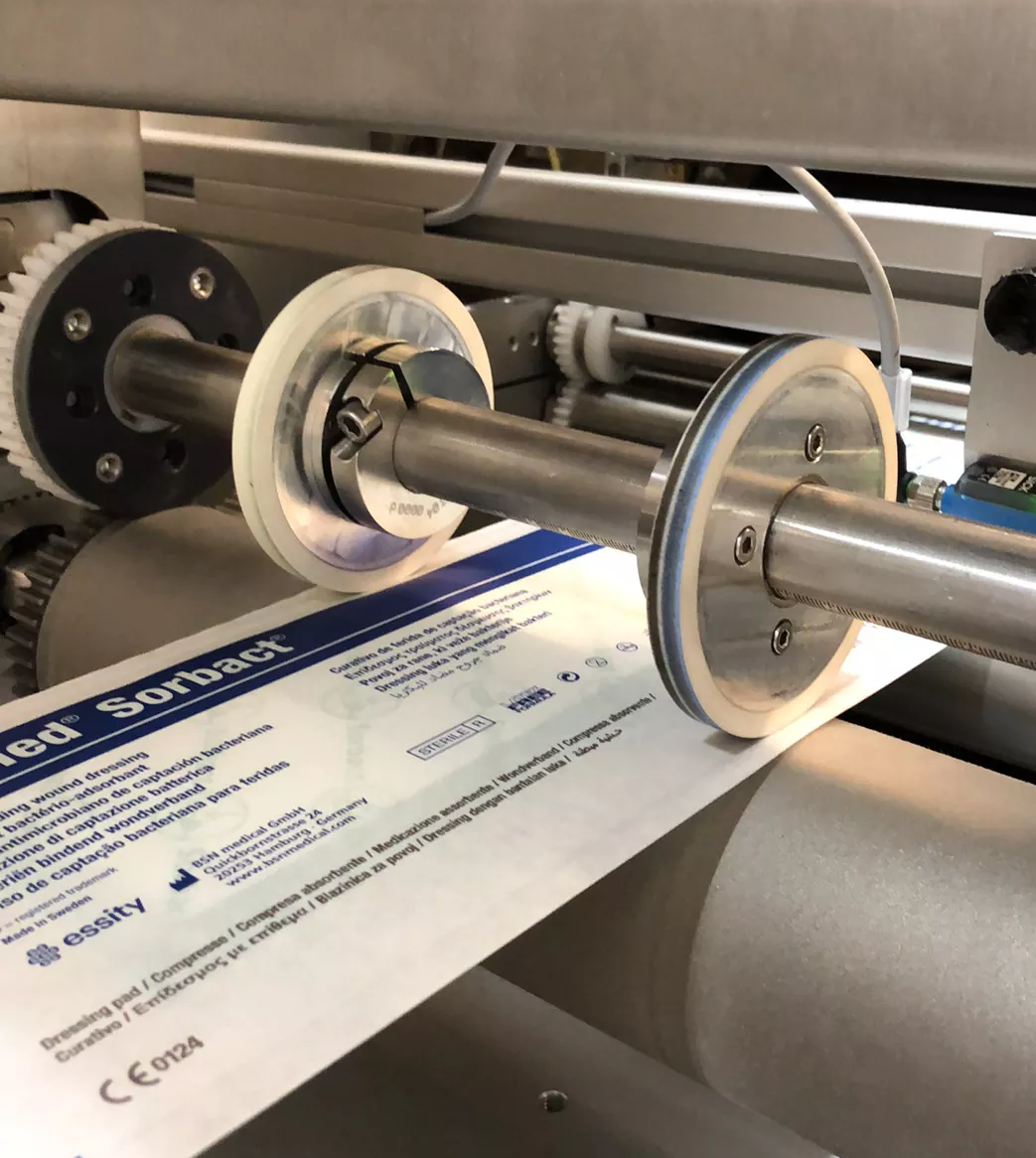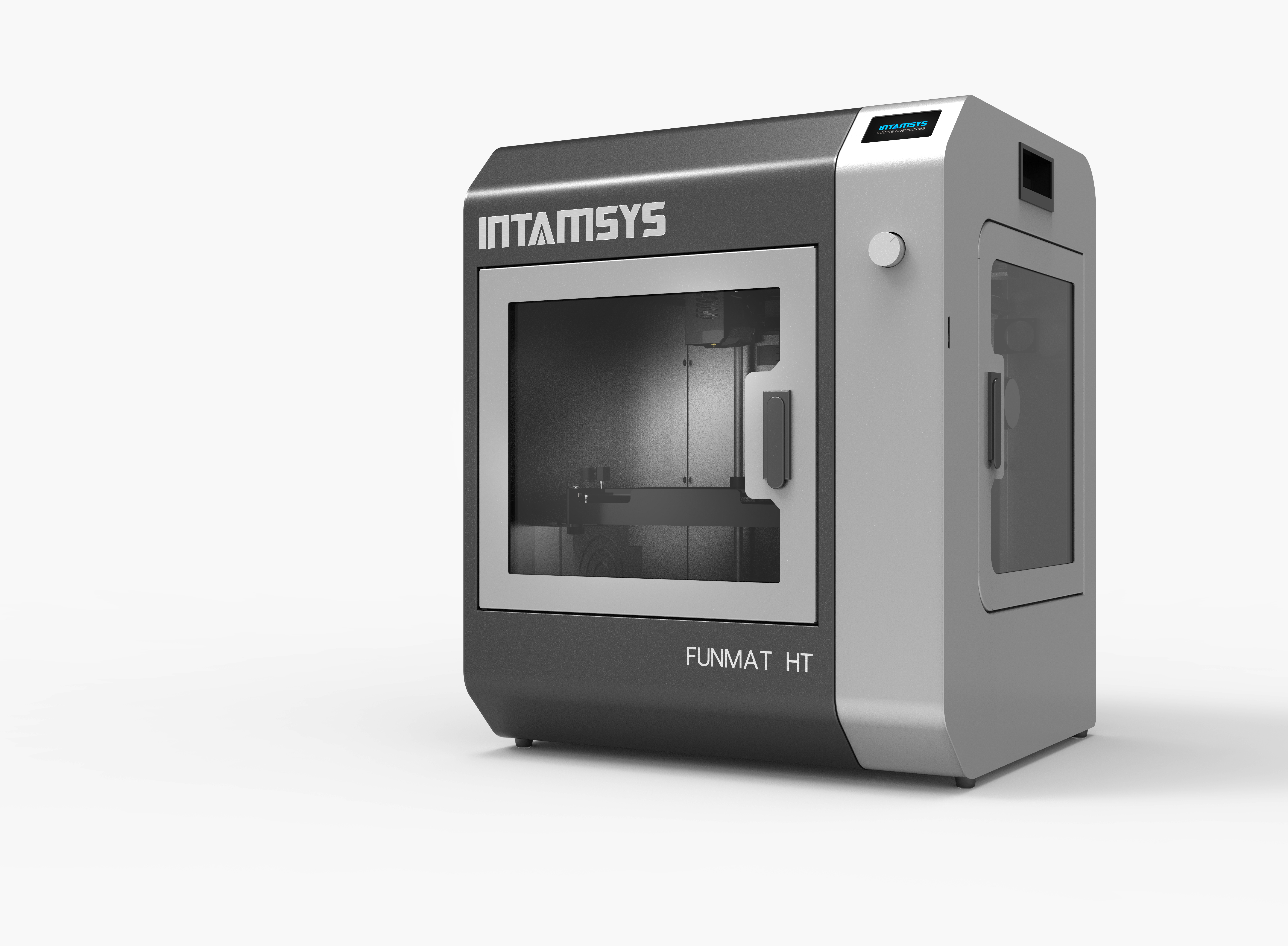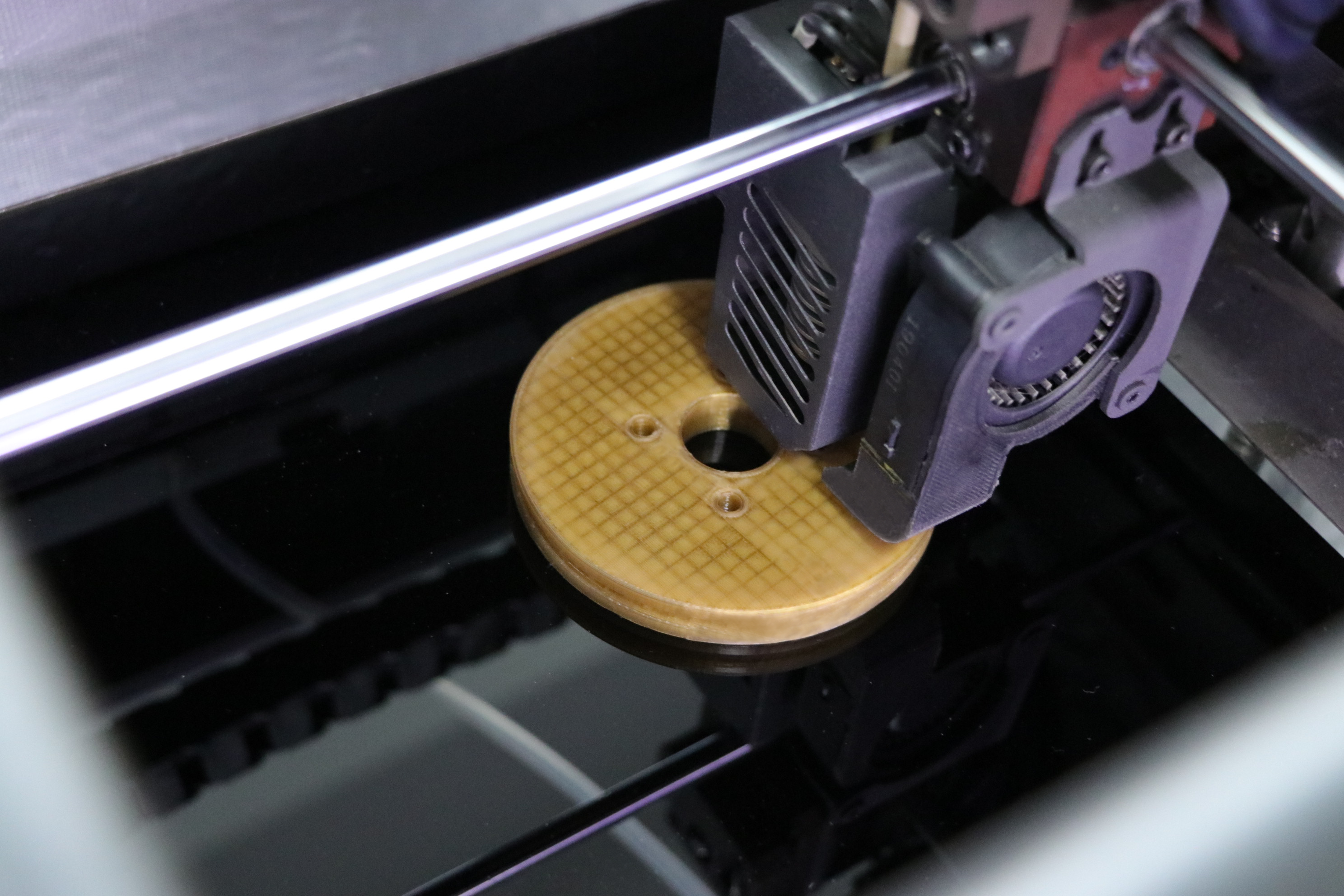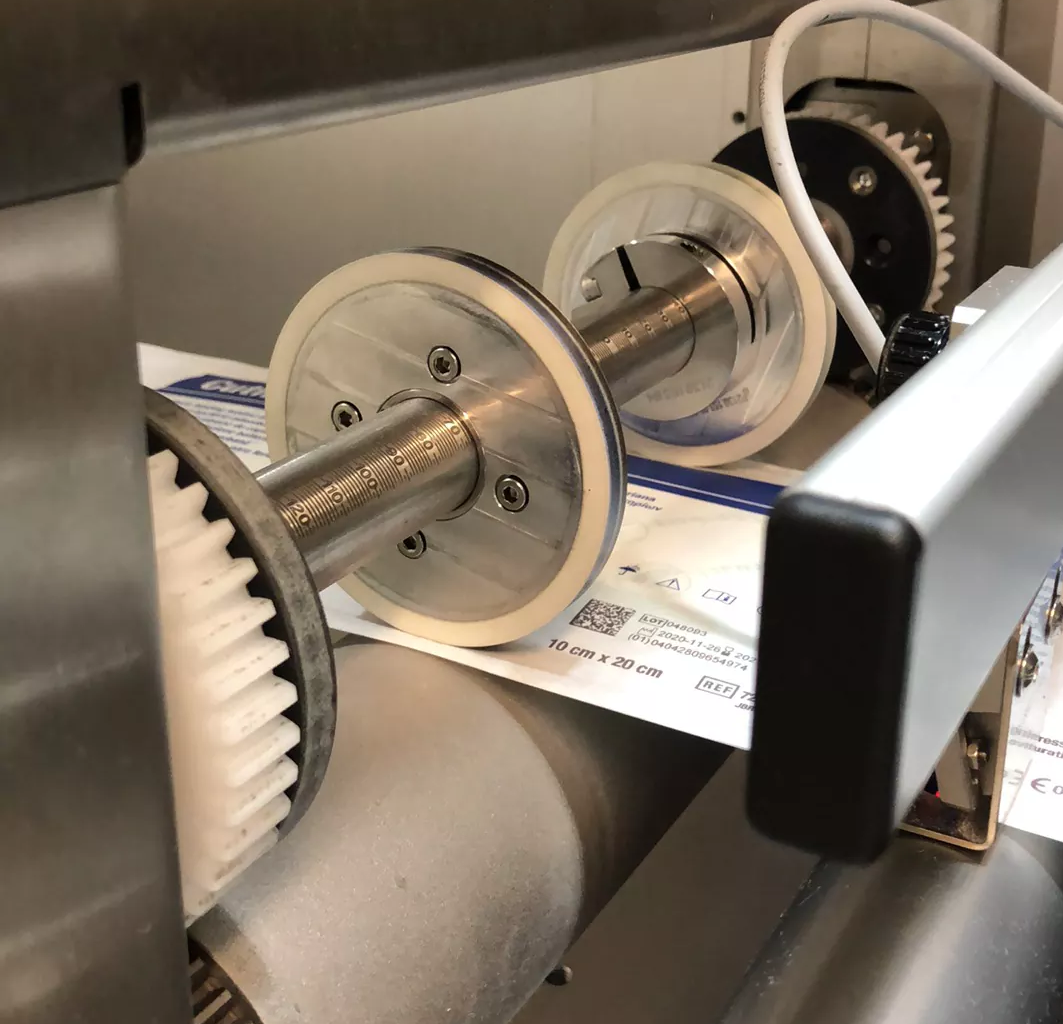Shanghai-based 3D printer manufacturer INTAMSYS has helped Swedish pharmaceutical firm ABIGO Medical keep its production line running by filling a delivery gap of spare parts with re-engineered 3D printed substitutes.
After the delivery time for new pulley wheels for ABIGO’s packaging line turned out to be eight weeks, the medical firm turned to the INTAMSYS’ FUNMAT HT printer to produce 3D printed substitutes for use in the system until the new pulley wheels arrived.
“It’s a fairly young packaging line for which we didn’t have any spare parts in stock yet,” explained Linus Göhle, Product Technician at ABIGO. “The delivery time for the original spare parts turned out to be seven to eight weeks. Too long. Right from the start, I have been looking for a 3D printer with which you can print PEEK and ULTEM, because we’re in a strictly regulated business. For some things, we really need approval for the materials we use.”

The FUNMAT HT
Launched in 2019, INTAMSYS’ entry-level FUNMAT HT FFF printer features an automatic-leveling process, a removable, magnetic glass-ceramic build plate, and four individual drivers for filament loading, print precision, speed & reliability. Equipped with a 90 degrees celsius heated build chamber, 160 degrees heated print bed, and a hardened nozzle, the printer is designed for industrial-grade polymers such as PEEK, PEKK, ULTEM, and PPSU, one of the main reasons ABIGO invested in the system.
“Printing with PEEK is really not difficult,” said Göhle. “We printed the INTAMSYS PEEK filament with the standard settings in the slicer, without any warping and with good adhesion of the layers.”
The FUNMAT HT is the entry-level model in INTAMSYS’ FUNMAT series of industrial-grade FFF 3D printers. At Formnext 2016 in Frankfurt, INTAMSYS’ FUNMAT HT 3D printer was praised for its high-performance functional material printing capabilities with PEEK, ULTEM (PEI), and carbon fiber composites. Following this, at Formnext 2018, INTAMSYS introduced the FUNMAT PRO 410 with new PEKK and PEEK-CF filaments.

Reverse engineering and 3D printing
The original pulley wheels that pulled paper into the sealing unit in ABIGO’s packaging line had worn out and led to malfunctions. Once the extended delivery time for spare parts became apparent, Göhle decided to reverse engineer the wheels in order to print them on the FUNMAT HT with PEEK. The material was chosen for its high temperature capabilities, as temperatures in the packaging line can rise to around 85 degrees celsius.
Göhle 3D printed the 92mm-diameter wheels and placed a rubber ring around them. “We expected the printed wheels to last one or two weeks,” he said. “Then we wanted to print a new set until the original replacement parts were delivered. In the end, the wheels remained in the machine for nine weeks.”
In the meantime, the original replacement parts had arrived, however Göhle kept the 3D printed wheels in the packaging line as they were still operating well.

Low cost spare parts
Not only did 3D printing the pulley wheels enable ABIGO to solve the issue of slow delivery of spare parts and prevent a potential shut down of the packaging line, but the 3D printed parts also proved 10 times cheaper than the original replacement parts. Although, the life span of the original parts remains longer than the 3D printed alternatives.
As a result of the successful printing of the pulley wheel, Göhle’s team went on to 3D print more replacement parts for the packaging line, including a bearing house for the conveyor belt. While the delivery time played less of a role here, 3D printing the bearing house was again cheaper than the original part.
“The costs, however, are considerably lower,” explained Göhle. “We printed the bearing housing for the conveyor belt in Polycarbonate for €100, while the original part, an aluminum part, costs €4,000.”
Due to its good mechanical properties and decent price to print quality ratio, Polycarbonate is the preferred filament of choice for Göhle and his team, while PEEK will be used when printing parts that are required to be constructed with specifically approved materials.
“We work under strict rules,” Göhle continued. “Sometimes customers demand that we only use materials that have been approved. For this, we must find suppliers who are open about the composition. That is why we chose an open platform.”

Integrating the FUNMAT HT into ABIGO’s workflow
After the successful results gained from using the FUNMAT HT to print spare parts for the packaging line, the printer is becoming increasingly integrated into ABIGO’s workflow. The printer runs almost round the clock not only for production parts, but also for training ABIGO’s staff and for learning purposes.
“I notice that the printer is becoming more and more embedded in our workflow,” Göhle observed. “We will use the printer more and more for maintenance work. The more we learn about the materials and the limitations, the more benefits we get from the printer.”
INTAMSYS’ Swedish partner Additiva AB has aided ABIGO with training and offers over-the-phone support in case of queries or issues. Further training on the machine is planned for the future as ABIGO continues to deploy 3D printing for production parts for its packaging line.
Subscribe to the 3D Printing Industry newsletter for the latest news in additive manufacturing. You can also stay connected by following us on Twitter and liking us on Facebook.
Be sure to subscribe to the Another Dimension podcast on your chosen podcast player to make sure you never miss an episode.
Looking for a career in additive manufacturing? Visit 3D Printing Jobs for a selection of roles in the industry.
Featured image shows ABIGO’s packaging line. Image via INTAMSYS.



